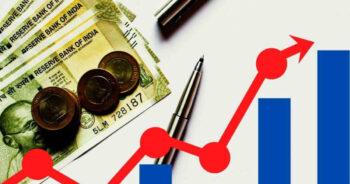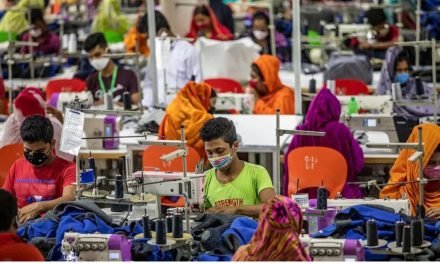 While India faces a lower risk of stagflation than other nations, there is now an upside risk to gross budget deficit due to additional welfare and subsidy spending and recent cuts in excise duties, according to the Finance Ministry, which recently said the economy faces slowing growth due to global factors.
While India faces a lower risk of stagflation than other nations, there is now an upside risk to gross budget deficit due to additional welfare and subsidy spending and recent cuts in excise duties, according to the Finance Ministry, which recently said the economy faces slowing growth due to global factors.
“India faces near-term challenges in managing its fiscal deficit, sustaining economic growth, reining in inflation and containing the current account deficit while maintaining a fair value of the Indian currency,” the Ministry said in its Monthly Economic Report for May.
Many countries, especially the developed ones, face similar challenges and India is relatively better placed to weather these challenges because of its financial sector stability and its vaccination success in enabling the economy to open up, the report stated.
The economy’s medium-term growth prospects remain bright as pent-up capacity expansion in the private sector is expected to drive capital formation and employment generation in the rest of this decade. Near-term challenges need to be managed carefully without sacrificing the hard-earned macroeconomic stability, it said.
Headline retail inflation for May this year cooled down from the eight-year high of April and came in at 7.04 per cent on back of base effect and cheaper food prices. It was still the fifth straight month of headline retail inflation being above the Monetary Policy Committee’s medium term target of 4 (plus or minus 2) per cent, justifying the two recent interest rate hikes by the central bank.
“The provisional estimates of GDP released on 31st May 2022 have reaffirmed Indian economy’s complete recovery over the pre-pandemic level, although contact intensive sectors are yet to recover. The recovery is driven by sustained growth in agriculture, higher investment and rise in exports,” the report said.
“However, going forward, global growth is expected to witness headwinds with rising commodity prices, supply chain bottlenecks and faster than the projected withdrawal of monetary accommodation. Various international agencies have projected a slowing of global economic growth,” the report said, adding that India’s economy is also expected to witness slowing growth, though still higher than the other emerging market economies.
The high-wire balancing act between maintaining growth momentum, restraining inflation, keeping the fiscal deficit within budget and ensuring a gradual evolution of the exchange rate in line with underlying external fundamentals of the economy is the challenge for policymaking this financial year and successfully pulling it off will require prioritising macroeconomic stability over near-term growth,” it said.
“Trade disruptions, export bans and the resulting surge in global commodity prices will continue to stoke inflation as long as Russia-Ukraine conflict persists and global supply chains remain un-repaired. The world is looking at a distinct possibility of widespread stagflation. India, however, is at low risk of stagflation, owing to its prudent stabilization policies,” it said.





















